Businesses across the United States are facing staffing issues. We see the effects in restaurants with shorter operating hours, limited menus, and dine-in restrictions. We see transit times on goods sold increased due to a country-wide shortage of truck drivers. Produce prices are on the rise because farmers can’t find the labor needed to harvest crops. The printing industry is no exception. The loss of skilled workers due to retirement, an introduction of new technology, or government stimulus handouts are a few reasons why filling press and press-related positions have been difficult.
While the economy is on the rise and printing companies have mostly seen a return to pre-2020 operations, they continue looking for new ideas to entice younger talent into their pipelines and reevaluate how to use technology to sustain and grow their businesses. This industry is fortunate in that there are outlets available for companies looking to fill vacancies and opportunities available to maintain and increase print processes without necessarily increasing headcounts.
Ways That Printers are Tackling The Print Industry Labor Shortage
Several opportunities, such as recruiting agencies, staffing agencies, and online search engines, are available for businesses to hire qualified staff. However, employers in the print industry should also consider the following options:
High Schools, Trade Schools, and Universities
It is getting more and more difficult for printing companies to find skilled labor. However, in some instances, suitable candidates can be found down the street at your local institution of higher learning. High schools, tech schools, and universities often offer graphic arts programs. These well-rounded programs offer curriculum designed to give students a glimpse into all aspects of printing. From designing to proofing, plate-making, and hands-on printing, today’s graphic arts students have a tremendous amount of classroom knowledge upon graduating. Institutions offering machinery classes are another opportunity to find potential production staff to serve as long-term employees in printing or equipment maintenance positions.
Work Release and Second Chance Programs
An often-overlooked pool of potential workers are those candidates with criminal records. Many people who re-enter society are not considered for employment opportunities because of their past. However, a number of correctional institutions throughout the United States manage successful print shops run by inmates. Inhouse print operations are created and seen as vocational training programs to keep inmates busy and productive while incarcerated. These jobs provide the foundation to transition inmates back into society with sought-after trade skills. Even though they might not be the first choice of many employers, former convicts with a background in printing or machinery (fixing and/or working with machinery) may make qualified candidates for press operators, maintenance technicians, and general laborers. A “second chance employee” will likely be one of the most loyal workers thanks to the opportunity to have gainful employment.
Decrease Labor Needs with Cutting-Edge Print Technology
The printing landscape of today is focused on filling vacancies. However, in many instances that might not be the best solution. Technology has progressed to the point that many jobs once deemed possible only by human contact are now routinely conducted by machinery. Twenty years ago it would have sounded impossible to verify print quality without human interaction. Now, through the use of automated vision inspection equipment, automated verification is commonplace. Similarly, the act of cleaning ink and coating pans by hand or through the purchase and use of expensive parts washers was unheard of. Today, technological innovations make it possible to clean ink pans and catch trays in minutes with current staffing. This allows printing companies to take advantage of faster clean-up and change-over times while increasing print operations. By reducing the dependency of personnel and machinery, a lean and streamlined approach is created. This lessens what was once viewed as essential labor, resulting in efficient production practices.
Contact Us Now for More Information or to Request a Quote
Phone: 970-874-2852

